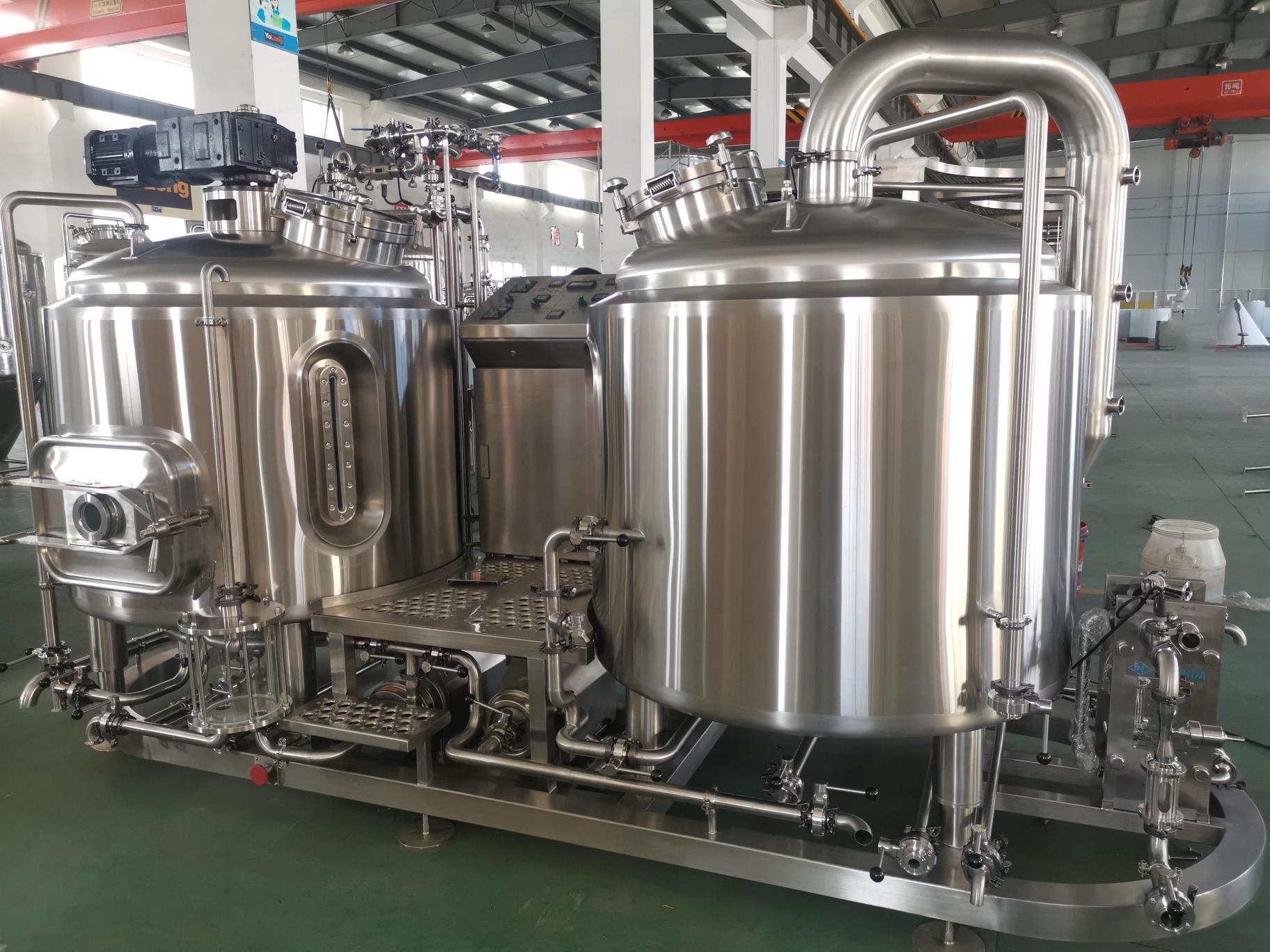Scaling up production with a 2bbl brewing system: What you need to know
As a home brewer or small-scale brewery owner, the thought of scaling up production may have crossed your mind. You might be wondering how to increase capacity while maintaining quality and affordability. One way to do so is by using a 2-barrel (2bbl) brewing system. In this article, we’ll cover everything you need to know about scaling up production with a 2bbl brewing system, including its pros and cons, financial considerations, and best practices.
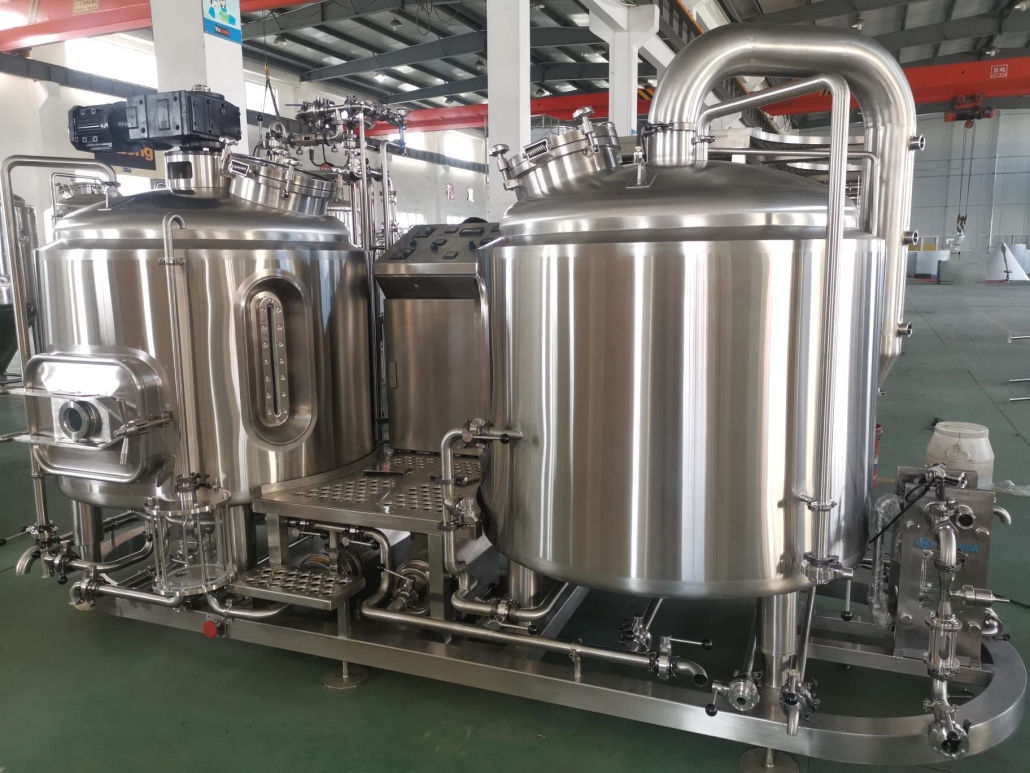
What is a 2bbl Brewing System?
A 2bbl brewing system is a small-scale brewing setup that has a production capacity of two barrels (approximately 62 gallons) of beer per batch. This type of system is suitable for small breweries, brewpubs, and even serious home brewers looking to increase their production without making a significant investment in larger, more complex systems.
Pros of a 2bbl Brewing System
Affordability
One of the primary advantages of a 2bbl brewing system is its affordability. Compared to larger systems, 2bbl setups require a lower initial investment, making them an attractive option for those looking to scale up without breaking the bank.
Flexibility
The smaller scale of a 2bbl system allows for greater flexibility in recipe development and experimentation. Brewers can create unique, small-batch beers and test them in the market before committing to full-scale production.
Increased Quality Control
With a smaller production capacity, 2bbl systems enable brewers to have greater control over quality. This can result in consistently better-tasting beers and a more refined product overall.
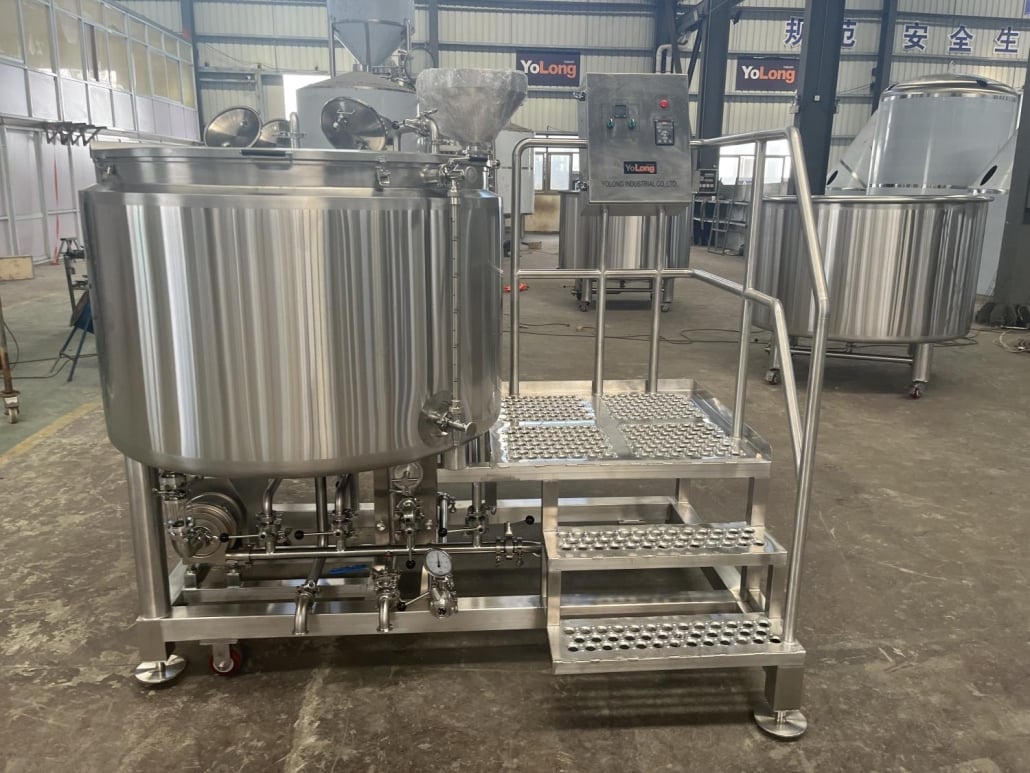
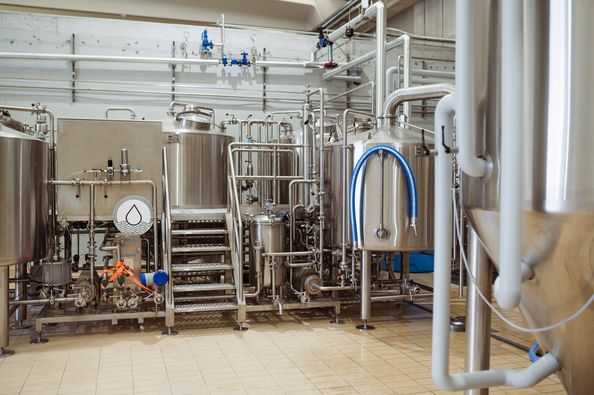
Cons of a 2bbl Brewing System
Limited Production Capacity
The primary disadvantage of a 2bbl brewing system is its limited production capacity. To meet growing demand, brewers may need to brew multiple batches, which can be time-consuming and labor-intensive.
Time and Labor Intensive
Due to the smaller scale of a 2bbl system, brewers may need to invest more time and labor in managing the brewing process, potentially leading to higher operating costs.
Preparing for Scale-Up
Planning and Design
To begin scaling up, develop a comprehensive plan. Consider your brewing goals, production needs, and growth strategies. This plan will guide your decisions as you expand your operation. Furthermore, a well-thought-out design can streamline the brewing process and improve efficiency.
Equipment Considerations
As you scale up, additional equipment becomes necessary. For example, you’ll need fermenters, bright tanks, and keg washing systems. Keep your current and future needs in mind when making these purchases. This ensures compatibility with your expansion plans.
Space Requirements
Expanding with a 2bbl brewing system requires more space. You’ll need room for brewing equipment, storage, and possibly a tasting room or retail area. Evaluate your current and future space needs to avoid running out of room as you grow. Planning ahead ensures a smooth transition during expansion.
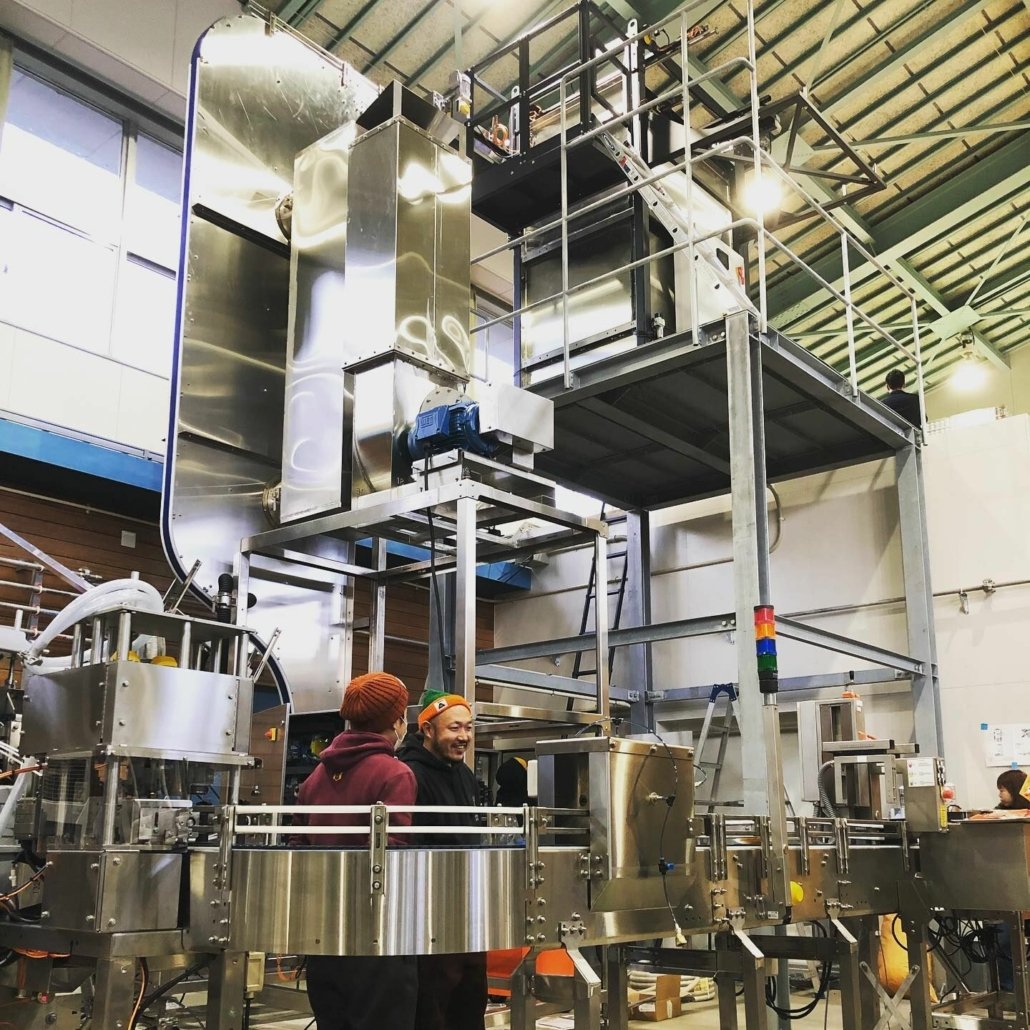
Financial Considerations
Investment Costs
Scaling up with a 2bbl system involves significant costs. Even though 2bbl systems are more affordable than larger setups, expenses can add up. These may include new equipment, building modifications, and increased utility expenses. Plan your budget accordingly.
Operating Expenses
As production increases, operating expenses will rise too. These include labor, ingredients, and packaging materials. Make sure to account for these costs in your financial planning. This will help you stay on track as your business grows.
Regulatory Compliance
Regulatory Compliance
Scaling up your brewing operation means dealing with additional regulatory requirements. You’ll need to take into account licensing, permits, and safety inspections. Consult both local and federal authorities to ensure you comply with all applicable regulations. Here’s a brief overview of the steps you should follow:
Step 1: Research Requirements
Firstly, familiarize yourself with the specific regulations in your region. Rules vary depending on your location, so start by researching your local and federal requirements.
Step 2: Obtain Necessary Licenses and Permits
Next, apply for the appropriate licenses and permits. This process may include obtaining a brewer’s license, building permits for facility modifications, and environmental permits.
Step 3: Adhere to Safety Standards
Now, focus on maintaining a safe working environment. This means complying with Occupational Safety and Health Administration (OSHA) standards, as well as local health department regulations.
Step 4: Quality Control
Ensure your product meets quality standards by adhering to guidelines set by organizations like the Food and Drug Administration (FDA) and the Alcohol and Tobacco Tax and Trade Bureau (TTB).
Step 5: Regular Inspections and Audits
Lastly, be prepared for regular inspections and audits. Both local and federal authorities may inspect your facility, equipment, and operations to ensure compliance.
In conclusion, staying informed about regulatory requirements and maintaining compliance are essential aspects of scaling up your brewing operation. By following these steps, you can avoid potential legal issues and focus on producing high-quality beer.
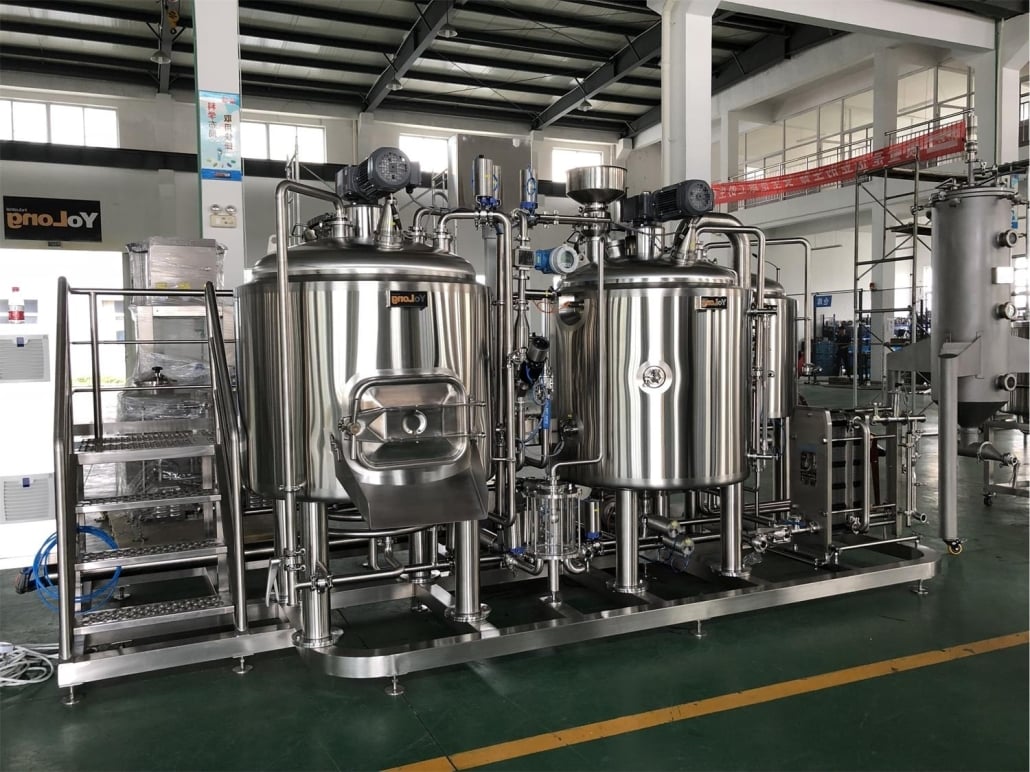
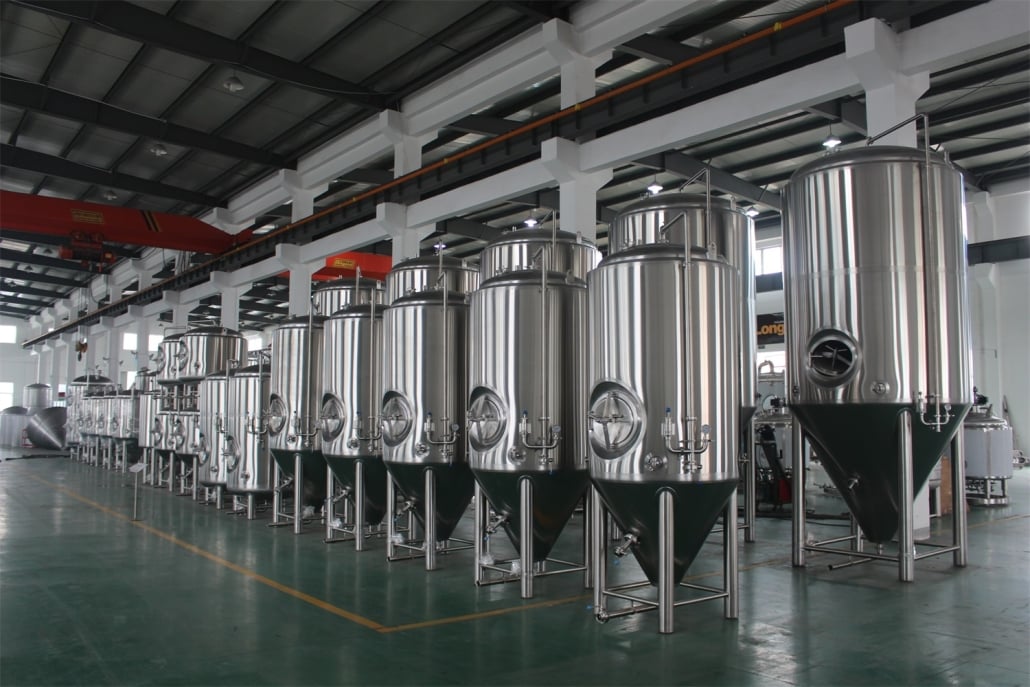
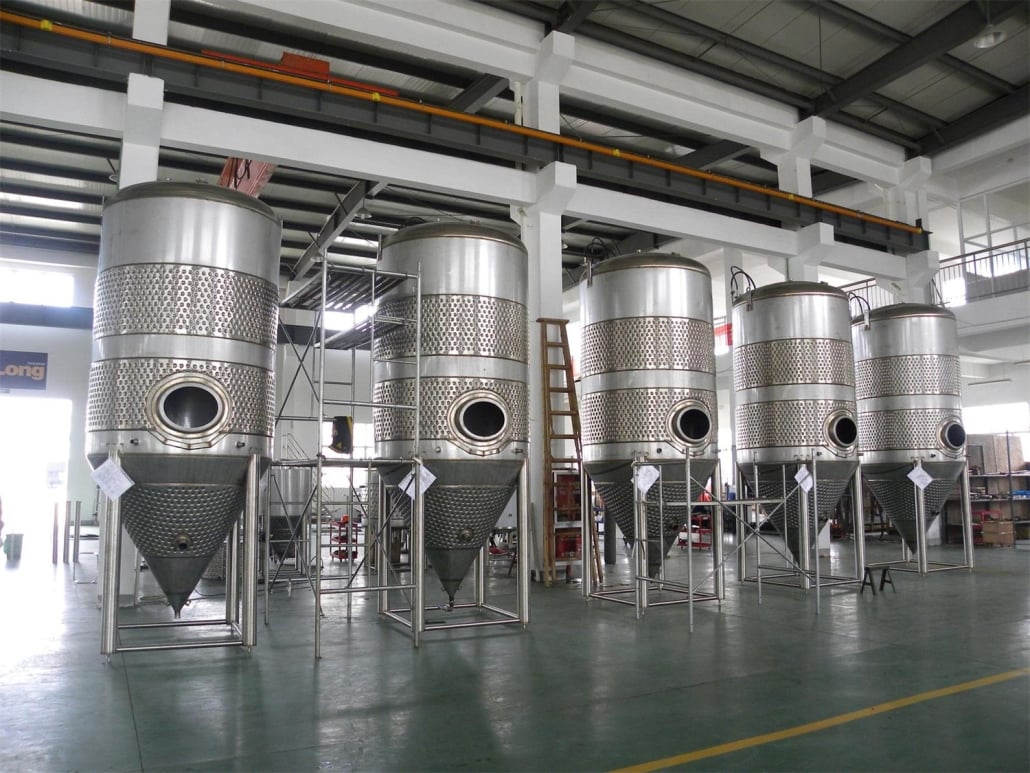
Marketing and Distribution
Marketing and Distribution
Expanding to New Markets
To reach a wider audience, consider expanding your brewery’s presence in new markets. Start by researching potential areas where your beer will be well-received. As you grow, keep in mind that entering new markets often requires a tailored approach to cater to local tastes and preferences.
Partnering with Distributors
Collaborating with distributors can help increase your beer’s visibility and availability. Make sure to choose partners who share your vision and commitment to quality. Also, maintain open communication and strive for strong, long-lasting relationships.
Enhancing Online Presence
In today’s digital age, having a strong online presence is crucial. Firstly, develop an engaging website that showcases your brand and products. Next, leverage social media platforms to connect with your audience and share your brewery’s story. Don’t forget to engage with your followers and encourage online reviews, as they can significantly impact your brand’s reputation.
Local Events and Collaborations
Participate in local events, such as beer festivals and tastings, to promote your brand and products. Additionally, consider collaborating with other local businesses to create unique, limited-edition beers. These partnerships can generate buzz and strengthen your ties with the community.
Building Customer Loyalty
Cultivate customer loyalty by offering a memorable experience at your brewery, whether it’s through brewery tours, tastings, or special events. Implement loyalty programs and offer exclusive benefits to returning customers. Remember, satisfied customers are more likely to spread the word about your beer.
By integrating these strategies into your marketing and distribution plan, you can effectively grow your brewery’s presence and reach a larger audience. Be prepared to adapt your approach as your business evolves and the market changes.
Best Practices for Scaling Up
- Plan carefully and set realistic goals for growth.
- Prioritize quality control and maintain high standards for your product.
- Establish a strong brand identity and marketing strategy.
- Build relationships with suppliers, distributors, and customers.
- Invest in your team by providing training and development opportunities.
- Stay current with industry trends and adapt to market changes.
Conclusion
Scaling up production with a 2bbl brewing system is an exciting and challenging endeavor. By carefully considering the pros and cons, financial implications, and best practices, you can successfully grow your brewing operation and take your craft beer business to the next level.
Thank you for reading this blog about 2bbl brewing system. If you’re looking for a high-quality, durable, and easy-to-use 2bbl brewing system, we recommend the brewing equipment brand Yolong Brewtech. Yolong brewing equipment has a good reputation in the market, and their products’ quality and reliability have stood the test of time. To learn more, visit our product page and browse our brewing system products.
- 10 Barrel Brewery
- 15 BBL Brewing System
- 20 BBL Brewing System
- 30 Barrel Brewing System
- 7BBL Brewhouse
- 10 bbl Brewhouse
- 60 bbl Brewhouse
Frequently Asked Questions (FAQ)
1) How many turns per week can a 2bbl brewing system realistically support?
- With a 4–6 hour turn and small cellar (4–6 fermenters), most teams achieve 6–12 turns/week, depending on staffing, overlap of hot-side/cold-side, and packaging cadence.
2) What utilities do I need for a 2bbl system?
- Typical: 240V single/three‑phase power (or gas), glycol chiller (½–1 ton per actively fermenting tank), potable hot/cold water, floor drain with trench or standpipe, and adequate makeup water/ventilation.
3) Should I choose single-vessel or 2–3 vessel on a 2bbl brewhouse?
- Single-vessel lowers capex and footprint but limits throughput and step-mash control. A 2–3 vessel layout increases control and can cut turn time, improving daily output and consistency.
4) How do I plan fermentation capacity for a 2bbl brewing system?
- Rule of thumb: 4–6x FV capacity relative to brewhouse size to maintain variety and account for fermentation/conditioning time. Example: 2bbl brewhouse with 8–12 bbl total FV volume.
5) What’s the best way to minimize oxygen during packaging at 2bbl scale?
- CO2 purge BBT/kegs/hoses, closed transfers at 8–12 psi, use deaerated water (if blending), and verify DO to filler/keg spear; target <50–100 ppb at package for improved shelf stability.
2025 Industry Trends for 2bbl Brewing System Operators
- Data-first nano operations: affordable sensors/loggers (temp/SG/pressure) feed batch records and help pass distributor QA.
- Low-oxygen standards: purgeable hop ports, closed transfers, and DO checks becoming common even at 2bbl scale.
- Space/energy optimization: compact stacked cellars, better insulation, VFD pumps, counterflow chilling with recirc to reduce utilities.
- Flexible SKUs: more small-format seasonals; 2bbl systems support rapid iteration and taproom variety.
- Financing options: equipment lenders offering micro/nano-friendly terms, shortening time to first pour.
2025 Benchmarks and Stats (2bbl brewing system)
| Metric | Typical Range/Benchmark (2025) | Notes / Source |
|---|---|---|
| Turn time per batch | 4–6 hours with overlap | Layout/automation dependent |
| Brewhouse efficiency | 70–80% (well-tuned) | Mash/lauter control impacts |
| Water-to-beer ratio | 4–6 hL/hL; optimized ≤4.5 | Brewers Association Sustainability |
| Chiller sizing | 0.5–1.0 tons per active FV (2–3 bbl) | Add 20–30% headroom |
| Package DO target | <50–100 ppb | ASBC/MBAA guidance (adapted) |
| COGS per bbl (taproom) | $80–$160 (ingredients/packaging/utilities) | Varies by recipe and market |
Selected references:
- Brewers Association technical/sustainability: https://www.brewersassociation.org/industry/research
- American Society of Brewing Chemists (ASBC) Methods: https://www.asbcnet.org
- Master Brewers Association of the Americas (MBAA): https://www.mbaa.com
- U.S. DOE AMO tools (energy optimization): https://www.energy.gov/eere/amo/tools
Latest Research Cases
Case Study 1: Closed Transfers and Purge Protocols Stabilize Hazy IPAs on a 2bbl Brewing System (2025)
Background: A taproom with a 2bbl brewhouse and 10 bbl total FV capacity reported hop fade and browning within 30–45 days.
Solution: Implemented CO2 mass‑flow purges for tanks/hoses, added purgeable dry‑hop doser, standardized 8–10 psi pressure transfers to BBT and kegs, and added spot DO checks pre‑packaging.
Results: DO to package dropped from 120–180 ppb to 40–80 ppb; 45‑day sensory retained aroma; dump rate for staling decreased ~25%.
Case Study 2: Lauter Optimization Cuts Turn Time and Increases Weekly Output (2024)
Background: Three turns/day cap due to slow lautering on a 2bbl, two‑vessel setup.
Solution: Adjusted crush (slightly coarser), added rice hulls, implemented vorlauf recirculation with DP monitoring, and insulated mash tun.
Results: Lauter time reduced ~15–20%; average turn time cut by ~35 minutes; weekly turns increased from 7 to 10 without extra labor hours.
Expert Opinions
- John Mallett, Brewing & Quality Leader; Author of “Malt: A Practical Guide”
“Throughput at 2bbl scale comes from predictable lautering and heat input. Dial in crush, bed depth, and recirculation to unlock extra turns without more stainless.” - Mary Pellettieri, Quality Consultant; Author of “Quality Management for Breweries”
“Document CCPs—knockout temp, DO checks, sanitizer concentrations. Small systems can meet big‑brewery quality when verification is routine.” - Laura Ulrich, Senior Brewer and Industry Educator
“Design for cleanability and oxygen control from day one: tri‑clamp everywhere, purgeable ports, and validated CIP. It saves hours and protects flavor.”
Practical Tools/Resources
- BA Draught/packaging and sustainability tools: https://www.brewersassociation.org
- ASBC Methods (DO, CO2 volumes, pH, VDK): https://www.asbcnet.org
- MBAA Technical Quarterly and webinars (lautering, cellar QA): https://www.mbaa.com
- DOE AMO calculators (insulation, pump/fan VFD savings): https://www.energy.gov/eere/amo/tools
- Brewfather or Beer30/OrchestratedBeer for batch/QC logging: https://brewfather.app | https://www.the5thingredient.com/beer30 | https://www.orchestrated.beer
SEO tip: Internally link “2bbl brewing system” to pages on glycol chiller sizing, lauter optimization, closed‑transfer setup, and nano‑brew financial modeling to deepen topical coverage and improve conversions.
Last updated: 2025-09-05
Changelog: Added 5 FAQs, 2025 benchmark table with sources, two case studies focused on oxygen control and lauter optimization, expert viewpoints, and a tools/resources list tailored to 2bbl brewing system scale-ups.
Next review date & triggers: 2026-01-31 or earlier if BA/ASBC/MBAA guidance updates, energy cost assumptions shift, or new compact automation/DO tools become mainstream.
Share this entry
Interested in learning more about Brewing Systems including additional details and pricing information? Please use the form below to contact us!
YOLONG BREWERY EQUIPMENT FAQS
- Commercial Brewery / Craft Brewery / Microbrewery / Nanobrewery
- What is The Difference Between Craft Beer and Industrial Beer?
- The Bespoke Differences In Custom Brewing Systems
- Everything You Need to Know About Kettle Souring
- How to Choose Brewing Equipment for Your business?
- How To Choose The-Best Partner To Build Your Commercial Microbrewing System?
- Two Detection Sensors That You Need To Use In Your Brewhouse System
- Remote Control Applications in Brewing Equipment/How does it work?
- How To Clean Your Brand New Brewery Tanks?

